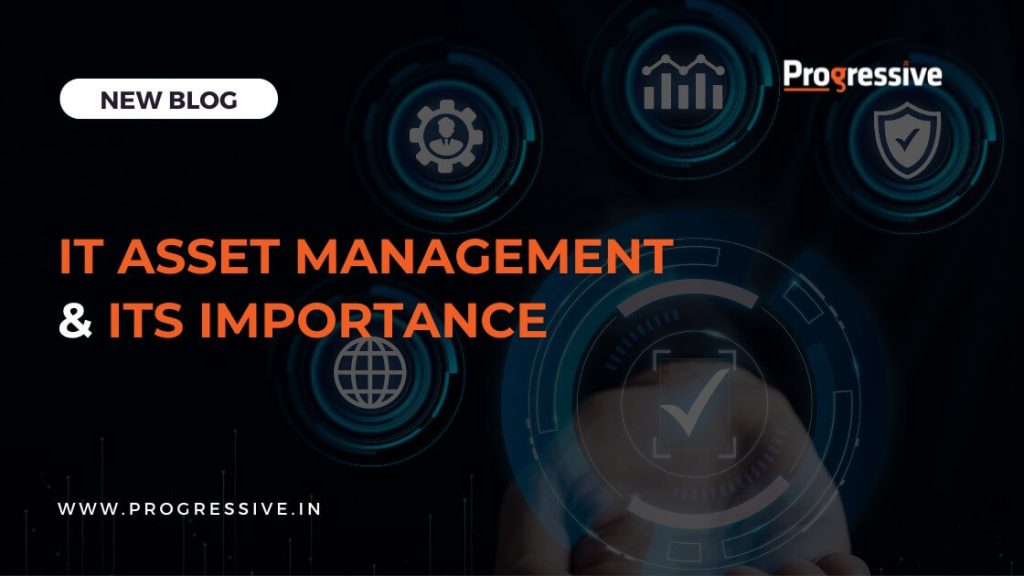
In today’s technology-driven world, businesses heavily rely on their digital infrastructure to operate efficiently. The tools, devices, software, and systems that power these operations are collectively referred to as IT assets. Managing these assets effectively is crucial for maintaining operational excellence, cost-efficiency, and security. This is where IT Asset Management (ITAM) comes into picture. In this blog, we’ll delve into the world of IT Asset Management, its significance, and the benefits it brings to businesses.
Understanding IT Asset Management (ITAM)
IT Asset Management (ITAM) is the process of strategically managing an organization’s IT assets throughout their lifecycle. It involves the acquisition, deployment, utilization, maintenance, and disposal of IT assets in a way that maximizes their value and minimizes risks and costs. These assets can encompass a wide range of items, including hardware (computers, servers, networking equipment), software (operating systems, applications), and even digital licenses.
IT Asset Management Research
According to the Allied Market Research, the global IT asset management market was valued at $1.3 billion in 2021, and is projected to reach $3.5 billion by 2031, growing at a CAGR of 11.1% from 2022 to 2031.
Deloitte Survey States, The IT Asset Management (ITAM) landscape has swiftly evolved, surpassing expectations, amid growing uncertainty and complexity in the business and macroeconomic setting.
According to the lenovo tech today, 76% of IT leaders struggle to balance business innovation and operational excellence.
Importance of IT Asset Management:
Cost Control and Efficiency:
IT assets can represent a significant investment for businesses. By implementing ITAM practices, organizations can gain better visibility into their asset inventory. This visibility allows them to optimize asset usage, prevent over-purchasing, and avoid unnecessary expenditures. Proper asset tracking can help identify underutilized resources, enabling reallocating or repurposing them to areas where they are needed.
Compliance and Risk Management:
Many industries are subject to regulations regarding software licensing, data security, and other IT-related matters. ITAM ensures that organizations remain compliant with these regulations by tracking software licenses, ensuring their proper use, and preventing unauthorized software installations. Effective ITAM also enhances data security by identifying and addressing potential vulnerabilities and ensuring that devices and software are up to date.
Strategic Decision-Making:
With a clear understanding of their IT assets, organizations can make informed decisions regarding technology investments. ITAM provides data-driven insights into asset performance, usage patterns, and lifecycles, allowing businesses to plan for upgrades, replacements, and optimizations more effectively.
Reduced Downtime and Improved Productivity:
IT asset failures or downtime can severely impact business operations. ITAM helps in proactive maintenance and timely upgrades, reducing the risk of unexpected asset failures. This leads to increased operational uptime and improved employee productivity.
Optimized Resource Allocation:
By tracking asset utilization, ITAM enables organizations to allocate resources based on actual needs. This prevents unnecessary purchases and ensures that resources are distributed where they are most effective.
Enhanced Vendor Management:
Effective ITAM involves maintaining accurate records of vendor contracts, warranties, and service agreements. This ensures that businesses can leverage vendor support efficiently and take advantage of warranty services before they expire.
Sustainability and Environmental Responsibility:
ITAM includes the responsible disposal of assets at the end of their lifecycle. This involves proper recycling and minimizing electronic waste, contributing to an organization’s commitment to environmental sustainability.
Implementing Effective IT Asset Management:
Inventory Management:
Start by creating a comprehensive inventory of all IT assets. This can be done using specialized software that automates the process and provides real-time tracking.
Lifecycle Management:
Track each asset’s lifecycle from procurement to retirement. Regularly assess assets for performance and relevance, and plan for replacements or upgrades as necessary.
Software License Management:
Keep accurate records of software licenses to ensure compliance and avoid legal issues. Implement usage policies to prevent unauthorized installations.
Regular Audits:
Conduct periodic audits to ensure the accuracy of your asset inventory and compliance with policies.
Employee Training:
Educate employees about ITAM policies and best practices to encourage responsible usage and reporting of IT assets.
How does Progressive Infotech help through IT Asset Management Services?
IT Asset Management goes beyond just managing hardware and software. It’s a strategic practice that empowers organizations to achieve better cost control, risk management, and operational efficiency. By implementing effective ITAM, businesses can make informed decisions, enhance productivity, and ensure their technology investments align with their overall goals. In an increasingly digital landscape, ITAM is an essential practice that contributes to the success and sustainability of modern enterprises.
Progressive Infotech’s IT Asset Management services offer a holistic solution that addresses the operational, financial, regulatory, security, and sustainability challenges faced by the industry. Their approach empowers businesses to optimize asset usage, control costs, ensure compliance, and make strategic decisions, ultimately fostering a more efficient, secure, and responsible IT ecosystem. To Know more about IT Asset Management Services, Visit: IT Asset Management Services
Get 24*7 IT integrated support: Contact Us Now